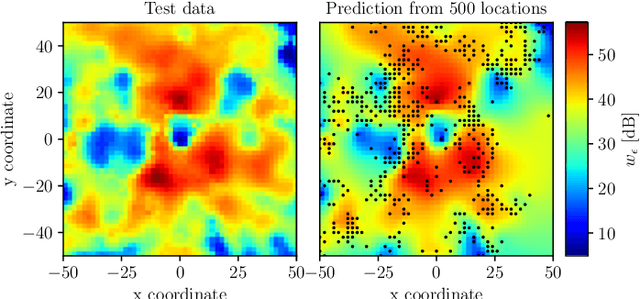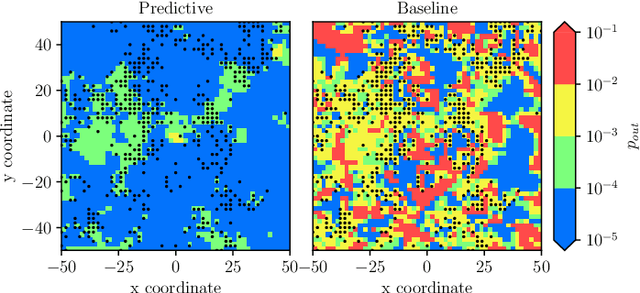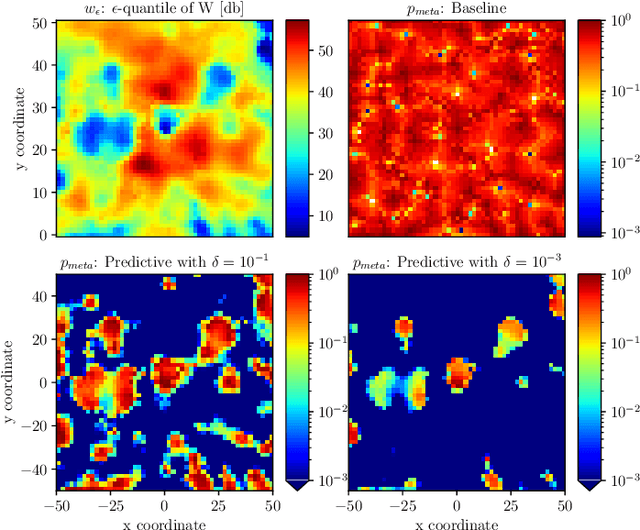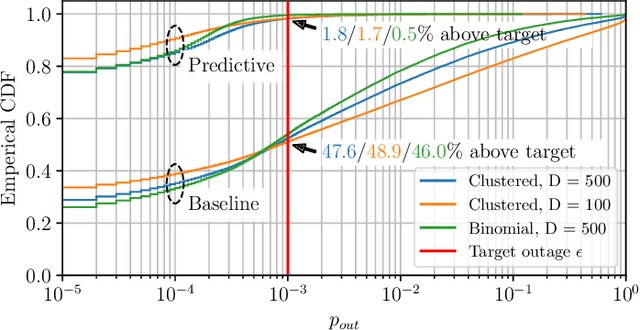Pablo Ramìrez-Espinosa
On the Statistical Relation of Ultra-Reliable Wireless and Location Estimation
Aug 28, 2023



Abstract:Location information is often used as a proxy to guarantee the performance of a wireless communication link. However, localization errors can result in a significant mismatch with the guarantees, particularly detrimental to users operating the ultra-reliable low-latency communication (URLLC) regime. This paper unveils the fundamental statistical relations between location estimation uncertainty and wireless link reliability, specifically in the context of rate selection for ultra-reliable communication. We start with a simple one-dimensional narrowband Rayleigh fading scenario and build towards a two-dimensional scenario in a rich scattering environment. The wireless link reliability is characterized by the meta-probability, the probability with respect to localization error of exceeding the outage capacity, and by removing other sources of errors in the system, we show that reliability is sensitive to localization errors. The $\epsilon$-outage coherence radius is defined and shown to provide valuable insight into the problem of location-based rate selection. However, it is generally challenging to guarantee reliability without accurate knowledge of the propagation environment. Finally, several rate-selection schemes are proposed, showcasing the problem's dynamics and revealing that properly accounting for the localization error is critical to ensure good performance in terms of reliability and achievable throughput.
Predictive Rate Selection for Ultra-Reliable Communication using Statistical Radio Maps
May 30, 2022



Abstract:This paper proposes exploiting the spatial correlation of wireless channel statistics beyond the conventional received signal strength maps by constructing statistical radio maps to predict any relevant channel statistics to assist communications. Specifically, from stored channel samples acquired by previous users in the network, we use Gaussian processes (GPs) to estimate quantiles of the channel distribution at a new position using a non-parametric model. This prior information is then used to select the transmission rate for some target level of reliability. The approach is tested with synthetic data, simulated from urban micro-cell environments, highlighting how the proposed solution helps to reduce the training estimation phase, which is especially attractive for the tight latency constraints inherent to ultra-reliable low-latency (URLLC) deployments.
 Add to Chrome
Add to Chrome Add to Firefox
Add to Firefox Add to Edge
Add to Edge